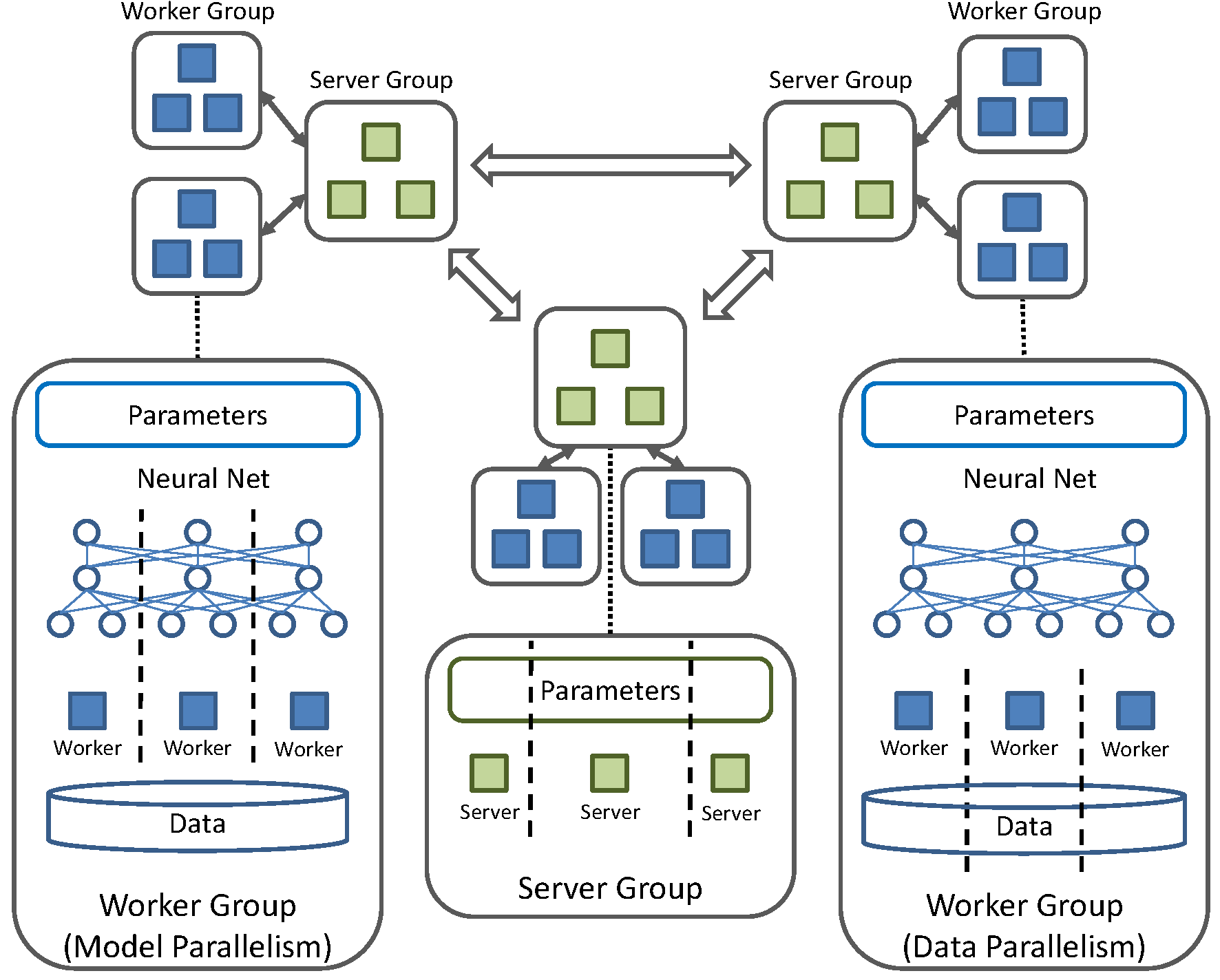SINGA Architecture
Logical Architecture

Fig.1 - Logical system architecture
SINGA has flexible architecture to support different distributed training frameworks (both synchronous and asynchronous). The logical system architecture is shown in Fig.1. The architecture consists of multiple server groups and worker groups:
- Server group A server group maintains a complete replica of the model parameters, and is responsible for handling get/update requests from worker groups. Neighboring server groups synchronize their parameters periodically. Typically, a server group contains a number of servers, and each server manages a partition of model parameters.
- Worker group Each worker group communicates with only one server group. A worker group trains a complete model replica against a partition of the training dataset, and is responsible for computing parameter gradients. All worker groups run and communicate with the corresponding server groups asynchronously. However, inside each worker group, the workers synchronously compute parameter updates for the model replica.
There are different strategies to distribute the training workload among workers within a group:
- Model parallelism. Each worker computes a subset of parameters against all data partitioned to the group.
- Data parallelism. Each worker computes all parameters against a subset of data.
- Hybrid parallelism. SINGA also supports hybrid parallelism.
Implementation
In SINGA, servers and workers are execution units running in separate threads. They communicate through messages. Every process runs the main thread as a stub that aggregates local messages and forwards them to corresponding (remote) receivers.
Each server group and worker group have a ParamShard object representing a complete model replica. If workers and servers resident in the same process, their ParamShard (partitions) can be configured to share the same memory space. In this case, the messages transferred between different execution units just contain pointers to the data, which reduces the communication cost. Unlike in inter-process cases, the messages have to include the parameter values.



